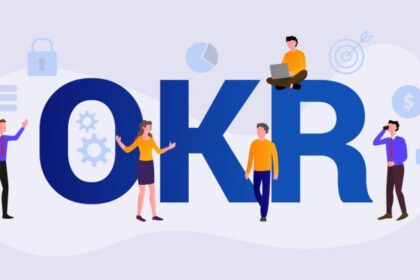
We are again at that part of the year where we work out our goals for the year. These are called by different names in different geographies and different organizations. But the basic purpose of all these is to ensure that individuals and teams are aligned to the overall goals of the organization. Organizations, particularly ones which have been in existence for a long period of time would have their own cultures and practices which have over a period established themselves as key goalposts and milestones in the organizations. Big organizations are also made up of different departments which at times tend to work in their own silos. While all these departments would, if we ask them would vouch that they only have the best interests of the organization in mind, in reality the real purposes might not be met. In today’s ultra-competitive world, the same is also true with individuals all of whom are trying to project themselves as better than everyone else in the room, leading very often to the organization’s interests being put at stake.
OKRs short form of Objectives and Key results is one such tool widely popularized by its effective use at Intel and then its adaptation at Google when it was still a startup. OKR is one among the many reasons credited for the huge growth of Google to where it is today. In a very simple version, the objectives of the OKRs define what we seek to achieve and key results are how these top priority goals will be attained. What is also unique about this approach is the transparency where everyone has visibility to everyone’s OKRs within the organization.
Dr Grove, the man who pioneered this concept at a very large scale in Intel always considered the following points as critical for ensuring that OKRs work to its full potential especially in large organizations as quoted by John Doerr in his book Measure what Matters.
1. Less is more.
We are all interested in achieving a lot of things at the same time. But sometimes it’s important that we prioritize and decide the most important and critical factors before we go ahead with them. Dr Grove had suggested to keeping the Objectives between the range of 3 to 5 during each cycle of planning that you are doing. So, this cycle could be a quarter or a year or even a smaller duration of a month. Each Objective should then be tied to 5 or fewer key result areas.
2. Set Goals bottom up.
To build engagement it’s suggested that 50% of the objectives be created by everyone in consultation with their managers. The balance would very often be connected to the overall company objectives or department objectives or vertical objectives and so on.
3. Stay Flexible particularly in Key Result areas.
While the objectives can get fixed based on various factors, the five or so key result areas that are assigned to each objective is fluid and can keep changing during implementation based on the various factors which come in play. For this to be effective all concerned people should keep connecting to understand the changed and evolving scenarios to arrive at the best key result areas.
4. Dare to Fail.
This also means that some of the KRAs will have to be aspirational which will enable the team to look at things in a different perspective to achieve these key results. These will also need to include a wider team as sometimes individuals alone cannot set aside the several roadblocks that can come about while trying to achieve these KRAs which are aspirational.
5. Use as a tool not weapon
To improve effectiveness Dr Grove had suggested keeping OKRs separate from performance reviews and bonuses so that they are not later used as a weapon against certain selected individuals or teams. The whole idea of OKRs is to set the right pace for each individual and OKRs are like giving a stopwatch to each person so that they can at any given point in time gauge their own performance on a variety of parameters.
6. Be patient, Be resolute.
Like in anything new that we set out with there would be challenges and struggles that keep coming up both in the way of setting targets and also in the way in which course corrections need to be taken to ensure that the desired results are reached. There is also a maturity which comes into the system as we go about with this activity.
In conclusion, the OKR framework combines the vision with the execution frameworks keeping in mind the contributions and needs of each individual and team. It moves ahead of mere goal setting which is what happens with KRAs and combines focused achievement and continuous improvement. To continue getting more insights on OKRs and such similar topics subscribe to my LinkedIn page, Rejo’s Business Bytes, or my website, rejofrancis.com.



